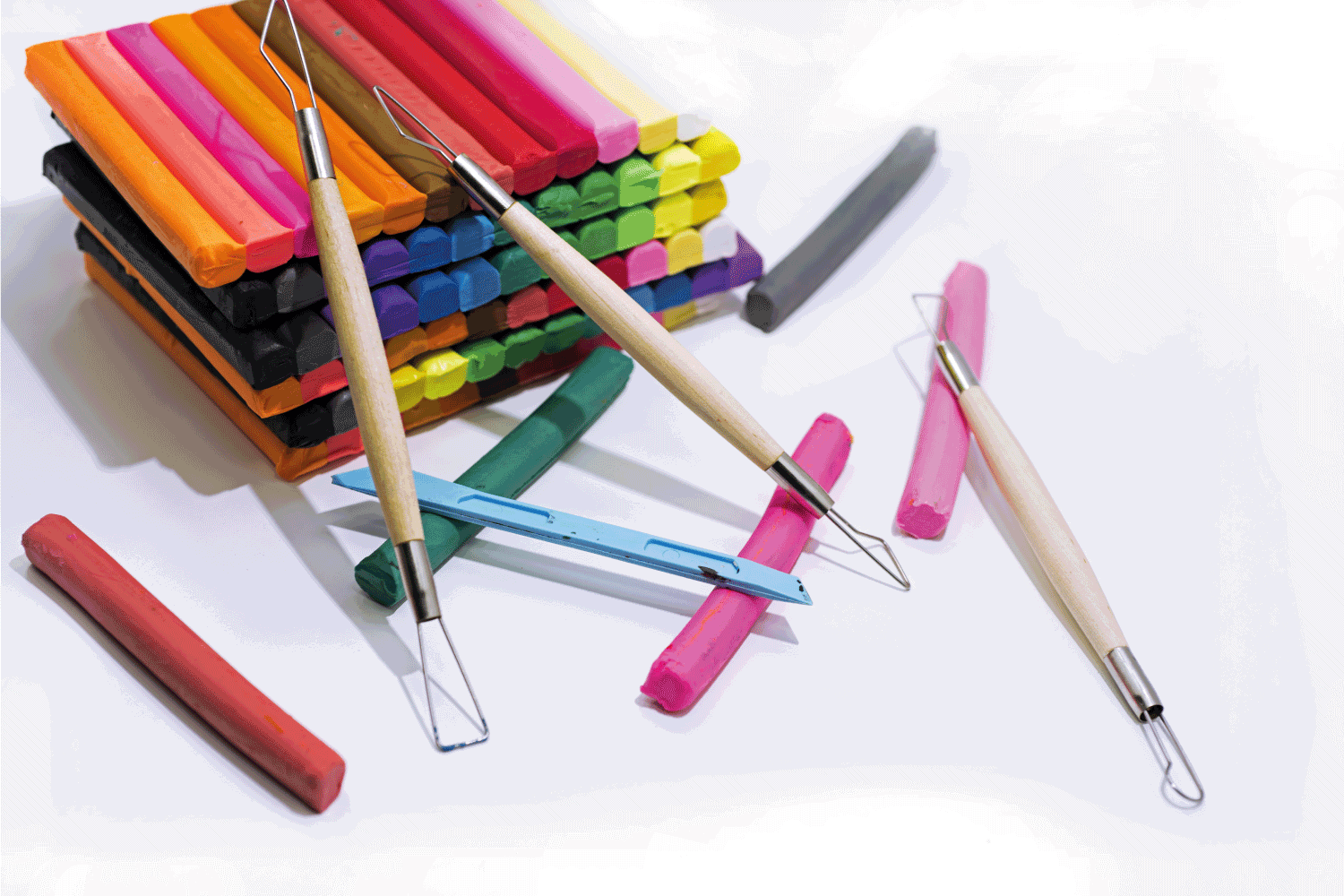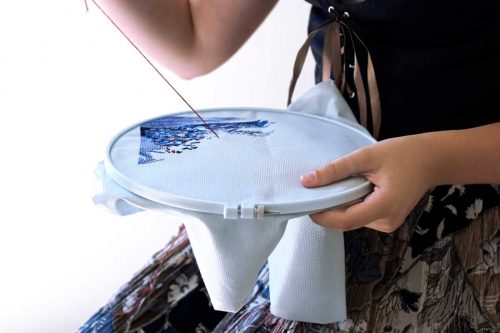Crafting with polymer clay is fun, sticky, and leaves a lot of room for unique projects. An essential step in the art of polymer clay is baking or curing your piece. There are many questions about baking clay. How long should I bake? At what heat? What happens if my clay hasn't baked all the way through? Does polymer clay smell when baking? Today, we are going to focus on that last question. We gathered our research to tell you if a smell should be expected while your polymer clay is baking and what it all means.
Polymer clay does have a slight smell when baking at normal temperatures. This odor dissipates quickly, but it can be bothersome for people sensitive to smell.
As long as your polymer clay is not burning, the smell released should be minimal. Keep reading as we break down if this odor is due to toxins and answer how you know when polymer clay is done baking.

Why Does Polymer Clay Smell When Baking?
There is a normal odor when you bake polymer clay. The strength of smell can change depending on the brand of clay and the sensitivity of the individual.
If you are noticing a strong or unbearable smell, this can mean something is wrong. Your clay might be baking at too high of a temperature or for too long. Strong odors may cause headaches or a sore throat.

Other factors that impact the odor's strength include the room's ventilation, size of the room, and use of liquid polymer clay. As your project and your oven cool, the odor will subside. Increasing ventilation or adding fans to circulate the air can help decrease the smell if needed.
Does Baking Polymer Clay Release Fumes?
Polymer clay has been labeled as non-toxic and does not release fumes or leave residue in the oven when baked at the recommended time and temperature. However, if polymer clay burns, hydrogen chloride gas fumes can be released, causing a smell and irritation to the eyes, nose, and throat. This gas gets released due to PVC material within the clay breaking down.
Burning clay will turn black, bubble, and release foul-smelling smoke. Stick to the baking instructions for your brand of clay to avoid unnecessary odors, irritation, and a ruined project,
Read more on our blog post, "Can Polymer Clay Air Dry Without Baking?"
Is The Smell Of Polymer Clay Toxic?
Polymer clay is manufactured and has a base of polyvinyl chloride(PVC) plastic. The smell of polymer clay is not toxic, even when baked at higher temperatures. The gas that gets released when clay burns is caustic. It is not entirely toxic, but it will burn your throat and lungs.

The smell isn't toxic, but it can still be irritating for those with sensitivities. If you are concerned about the smell, ensure you have adequate ventilation where you are baking and stay vigilant with sticking to baking instructions.
Read more on our blog post, "Can You Bake Polymer Clay On Glass?".
Is It Safe To Cook Polymer Clay In The Oven?
Baking polymer clay in your home oven is perfectly safe. You can cook food in that same oven once your project has cured, but do not bake both simultaneously. You should clean your oven periodically and ensure good ventilation in the room you are baking in.
Another option for baking polymer clay is in a toaster oven. Monitoring and temperature control may be easier with a toaster oven, but it is essential to have an oven thermometer inside.
Amazon offers an easy-to-control toaster oven here.
Learn more on our blog post, "Can Polymer Clay Explode In The Oven?".
Can You Bake Polymer Clay In The Microwave?
You cannot bake polymer clay in the microwave. Don't be tempted by faster baking times because this method does not work. The uneven distribution of heat, and the inability to monitor correct temperature, make baking clay in the microwave dangerous and unpredictable.
Polymer clay will never bake appropriately in a microwave. You will be left with a burnt or melted project and a room full of fumes. If your clay doesn't burn, the project will still be unevenly baked, often leaving you with a gooey inside and a crumbly outside. Avoid this baking method at all costs and follow the baking instructions on your clay package.
Read more on our blog post, "Can You Use Clear Nail Polish On Polymer Clay?".
How Do You Know When Polymer Clay Is Done Baking?
As polymer clay is baking, it fuses together and eventually becomes hard. If the clay doesn't bake long enough or get hot enough to fuse fully, your project will easily crumble or fall apart. So, how can you ensure your project has been fully baked and you're not prematurely taking it out of the oven?
It is nearly impossible to know a project is entirely fused by touch. You would have to break a piece off to know for sure. Under baked polymer clay will snap easily. It's not feasible to break a piece off your project to check if it is baked thoroughly.
Instead, you can bake a piece of clay the same thickness as your project as a bake test. Your fingernail is a tool as well. Properly baked clay can be marked with a fingernail, but it won't sink in.
Oven thermometers help you monitor for accurate baking temperatures.
You can find one here on Amazon.
You can always bake longer when in doubt. Baking for longer periods of time is doable if the temperature remains stable. One downside of longer baking times is it could affect the color of your clay. A good rule of thumb is clay need to be baked 15-30 minutes per 1/4 inch thickness.
Read more on our blog post, "Can Polymer Clay Get Wet? Is It Waterproof After Baking?".
Can You Re-bake Polymer Clay?
What do you do if you realize your clay project is underbaked? Good news! You can re-bake polymer clay; it can be re-baked multiple times without consequence. The clay's cure is stronger if baked thoroughly the first time, but re-baking is better than leaving a project undercooked.
The video below provides insights into how long you should be baking your polymer clay projects.
Read more on our blog post, "Polymer Clay Not Hard After Baking — What To Do?".
Can You Be Allergic To Polymer Clay?
It is possible for you to be allergic to one or more ingredients within polymer clay. A skin reaction to touching polymer clay can look like a rash and become itchy. Polymer clay has been labeled non-toxic, but you should not eat it, eat food off it, burn it or touch your eyes or mouth after working with the clay.
If you have sensitive skin or known sensitivities, you can take precautions by wearing gloves when handling polymer clay. Latex or vinyl gloves are great options for this craft and have more than one benefit. Wearing gloves protects your hands and reduces the appearance of fingerprints and other debris on your project.
Symptoms like itching, burning, rash, watery eyes and nose, difficulty breathing, and sneezing can all be signs of an allergic reaction. If any of these signs are observed, wash your hands immediately and contact your physician.

In Summary
Polymer clay does give off a smell when baking. If you are baking at the recommended temperature, the smell should be minimal and will dissipate quickly. Burned clay, lack of ventilation, or sensitivity to smells can make the odor from polymer clay worse. Polymer clay is non-toxic, but you mustn't burn your polymer clay, as this will break down the material leaving an irritating gas behind. We hope you found this article helpful when it comes to sorting out smells in the craft room. Happy crafting.
Are you looking for more inspiration when it comes to crafting with polymer clay? Have a look through our blog post, "Can You Use Polymer Clay For Mugs?"








![Read more about the article Can You Glue Fabric To Leather? [Products & Steps Included]](https://craftsbliss.com/wp-content/uploads/2023/01/In-workroom-girl-makes-purse-with-brushglueleather.-500x333.jpg)